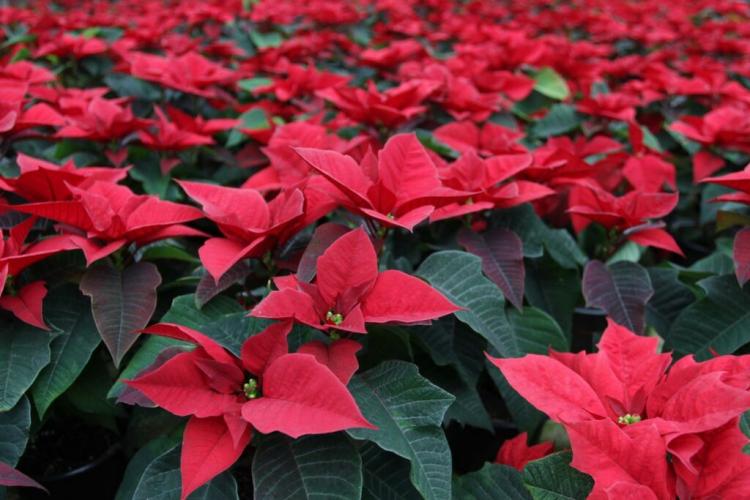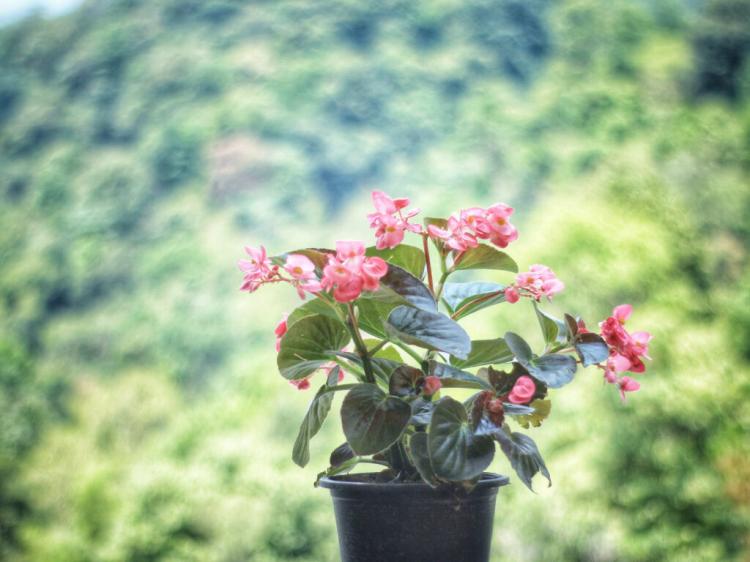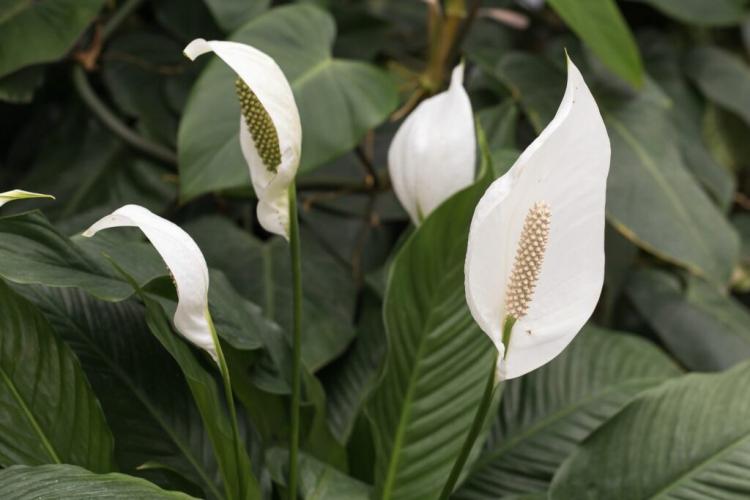Poinsettia: Everything about planting, caring for and propagating
Hardly any other plant spreads more Christmas spirit than the Christmas star. We show what you have to consider when planting in beds or pots and give care tips for watering, cutting, and fertilizing the poinsettia.
According to its botanical name, the poinsettia (Euphorbia pulcherrima ) is considered the most beautiful specimen among the milkweed plants – we can only agree, after all, the plant, also known as the Christmas star, Advent star, or poinsettia, with its striking flowers and leaves is a real eye-catcher – and that is not only for Christmas. Because with our tips on planting, caring for, and propagating, the poinsettia enchants us all year round.
Poinsettia: origin and characteristics
Table of Contents
The poinsettia is native to Central and South America, where it grows as a shrub up to four meters high with a woody trunk. Originally, the natural forms of the poinsettia did not have as much branching as the specimens that can be found on our window sills in winter. The smallest microorganisms, so-called phytoplasmas, are responsible for this.
Without them, a poinsettia would simply grow single shoots without removing the tips by hand and also only develop a single flower.
Although poinsettia has become indispensable today, it has only been known to us since 1950 and enchants us during Advent and Christmas. Since then it has been firmly established as an ornamental plant and is even one of the best-selling indoor plants worldwide.
The leaves of the Christmas star are slightly hairy and alternate. They are pointed at the top and lanceolate or egg-shaped. The lower leaves are dark green, the underside is a little lighter. The high ornamental factor of the poinsettia is made up of the so-called bracts, which are not the flowers at all. These are naturally red.
Nowadays, poinsettias with cream, pink or pink bracts are also grown. And if that’s still not colorful enough, you can even find blue or gold-leafed poinsettias. However, these are colored and not grown that way. The actual flowers – also known as cyathia in the case of the poinsettia – are inconspicuous and greenish-yellow. They bloom from October to January and are surrounded by colored bracts in a star shape.
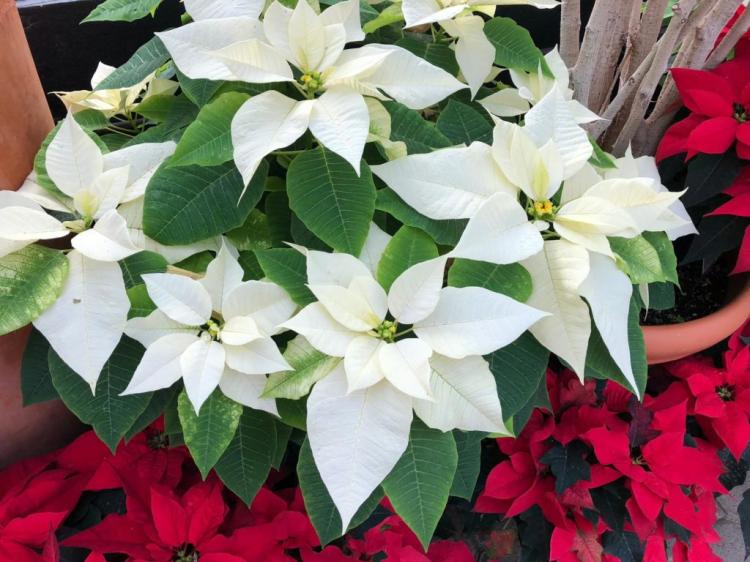
Caring for poinsettia
Poinsettias brighten up Advent and bring the Christmas spirit into the house. Unfortunately, most people simply dispose of the plant after the holidays. But that doesn’t have to be the case, because the poinsettia is a perennial plant and can even move into the garden bed in summer. With the right care, you can enjoy the beautiful plant for many years. You will learn how to water, fertilize and cut your poinsettia correctly in the next sections.
Watering the poinsettia
A poinsettia should be kept evenly moist in the pot, but not too moist. In any case, there must be no water in the saucer – this would immediately lead to problems with root rot. For possible further cultivation even after the poinsettia has finished blooming, it is important to know that the water requirement of a blooming poinsettia is less than that of a non-blooming plant. If the poinsettia is planted in the garden bed over the summer, it needs little water. Water moderately and only on particularly hot and dry days.
Summary – watering the poinsettia correctly:
- Keep evenly moist
- Avoid waterlogging
- Poinsettias require less water after flower induction
- Only water moderately in the garden bed in summer
Fertilize poinsettia
If the poinsettia is only to find a place on the windowsill during the few weeks of its flowering, no additional fertilization is required. However, if you want to keep it longer and bring it to bloom again, you have to re-fertilize. For this purpose, a nitrogen-based complete fertilizer with organic long-term effects is recommended. This keeps all the important nutrients for your poinsettia ready and thanks to its natural ingredients it is kind to the environment.
During the main growth phase – recognizable by the development of new leaves and shoots – you can re-fertilize every four to six weeks. If the plant is planted in the garden bed for the summer, basic fertilization is recommended before planting. To do this, work our Gardender organic universal fertilizer with organic long-term effects into the soil and then plant the poinsettia. You can also re-fertilize every four to six weeks outdoors.
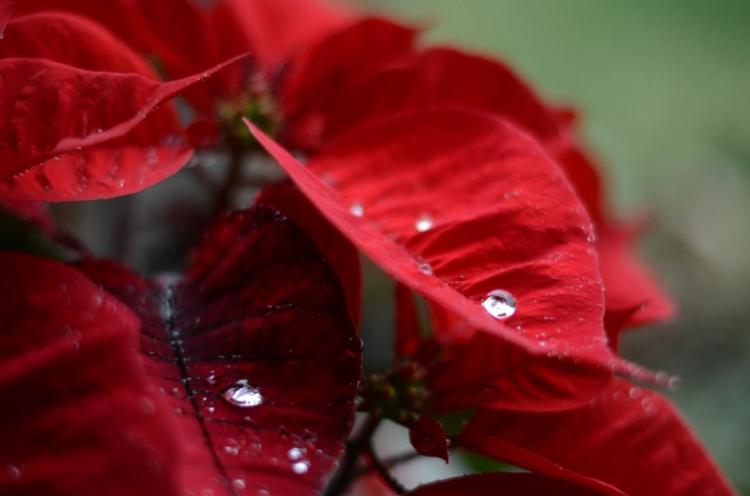
Summary for correct fertilization:
- No fertilization is required during flowering
- In summer, fertilize in the pot every four to six weeks during the main growth phase
- It is best to use nitrogen-based complete nutrient fertilizers with organic long-term effects
- In the summer in the bed before planting, work fertilizer with long-term organic effects into the soil
- Re-fertilize every 6 – 8 weeks
Cut poinsettia
Usually, the poinsettia is not cut during the Christmas flowering period. However, if the star is to be retained and you will continue to enjoy the colorful bracts for more winters, it is advisable to cut it back after flowering. Remove all old and withered flowers and leaves. Then shorten all the shoots by half. In this way, the plant is well prepared for summer and you also maintain a more compact growth of the plant.
You might so like: Calla Lily Winter Care: This Is How The Exotic Survives The Cold Season
In general, you can remove rotten or withered parts of the plant at any time to keep the plant healthy. You should also cut offshoots and leaves affected by diseases or pests at any time. There is also the option of cutting off individual shoots of the plant for the vase at Christmas time.
Summary: this is how the perfect cut succeeds
- Generally cut off rotten and dried up shoots
- Cut back after flowering
- Remove all withered flowers and leaves
- Shorten all shoots by half
Planting poinsettia: location, timing, and procedure
For your poinsettia to last as long as possible, it is worthwhile to be careful when planting and to pay attention to a few points such as the correct location and time. In the following chapter, you will therefore learn everything about planting and repotting poinsettias in pots and the garden.
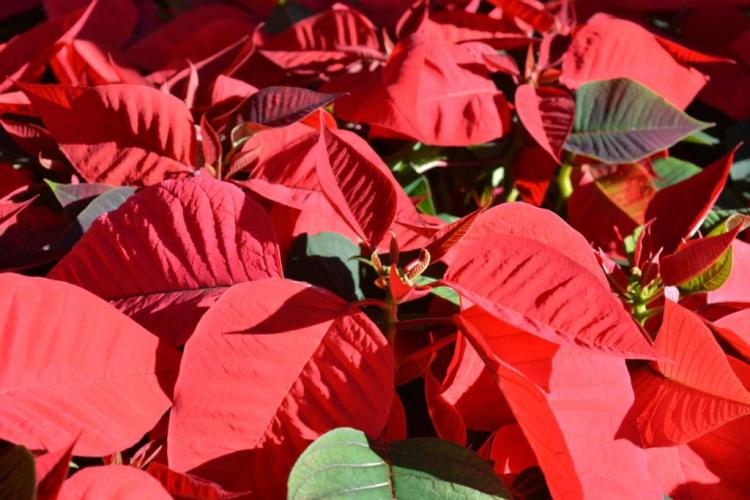
Plant poinsettia in the bed
In summer the poinsettia can move into the garden; however, it is not wintering hardy and does not tolerate temperatures below 10 ° C. He feels particularly comfortable in a partially shaded location that is sheltered from the wind and warm. The soil should be permeable and not too humus. Because you will dig up the plant again in autumn, it is advisable to plant the poinsettia with the pot.
Planting a poinsettia in the bed – the most important questions and answers:
- When? Temperatures are constantly above 10 ° C
- Where? Partially shaded, sheltered from the wind and warm
- Which soil? Permeable and not too humic
- How? With pot
Plant the poinsettia in the pot
A warm and bright location is suitable for the poinsettia in the pot, but not directly above the heater. The pretty plant also doesn’t like drafts at all. The Christmas star feels right at home at temperatures between 15 and 22 ° C. If you also plant it in cactus soil, nothing can go wrong.
Planting poinsettia in the pot at a glance:
- Warm and bright location
- No drafts and not directly above the heater
- Ideal temperatures: 15 – 22 ° C
- Cactus soil is a good substrate
Repot the Christmas star
If you want to cultivate your poinsettia for several years, you should repot it annually. The best time to do this is in the spring after flowering. For the new planter, choose a pot that is only slightly larger than the old one. In a pot that is too big, the poinsettia will, unfortunately, develop more poorly than well. Change the substrate when repotting and enrich the new soil with a fertilizer with an organic long-term effect, for example with our organic universal fertilizer.
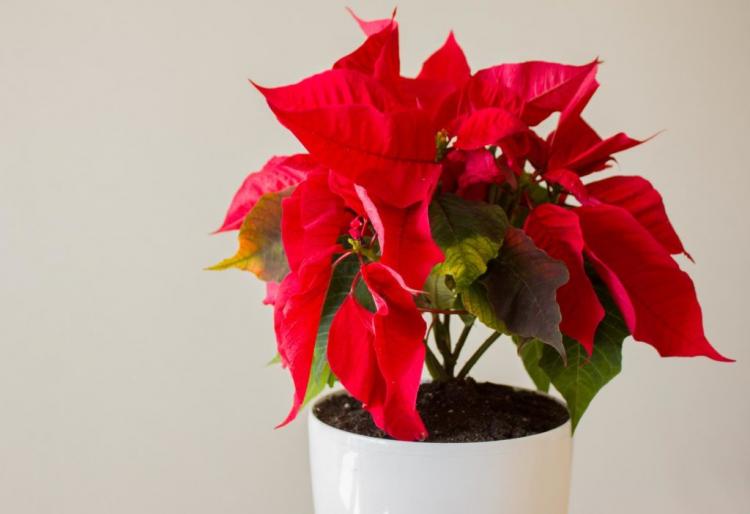
Summary: how to repot poinsettia?
- The ideal time in spring after flowering
- Only choose a slightly larger planter
- Work fertilizer with organic long-term effect into the substrate
Hibernate poinsettia
Even a short time with too cold temperatures can be dangerous for the poinsettia. The plant, which comes from tropical areas, does not tolerate temperatures below 10 ° C. During the typical Christmas tree season, the poinsettia should be wrapped in the paper after purchase for transport – this protects it from the cold temperatures and you prevent the Christmas star from having to die prematurely due to the cold.
You might so like: 10 Tips For Fresh Rosemary From Your Flower Bed
The poinsettia cannot spend the winter outdoors either and must be brought in early in the fall. In the pot, however, the poinsettia can easily overwinter in the apartment.
Wintering poinsettia at a glance:
- Does not tolerate temperatures below 10 ° C
- After buying it, wrap it in paper to protect it from the cold
- Bring in plants that were outside in summer in good time in autumn
The poinsettia can not only hibernate but even develop new flowers every year. We explain here how to make the poinsettia bloom again.
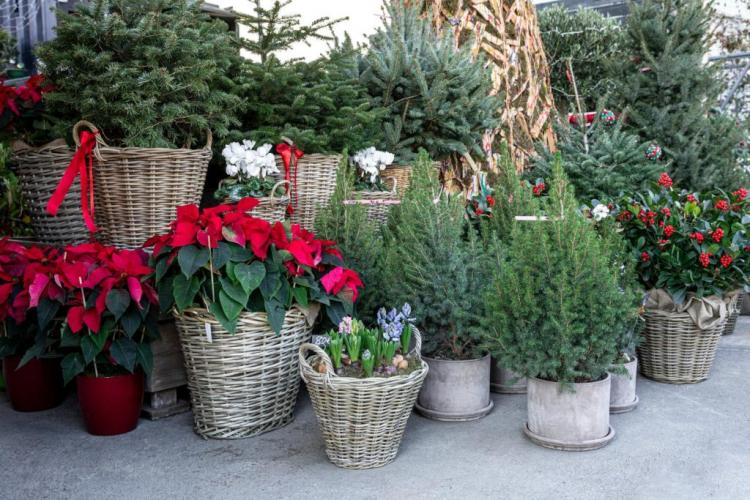
Propagate poinsettia
The poinsettia is only propagated from cuttings. The coveted winter bloomer is only sowed for breeding purposes. For propagation by cuttings, young, fresh shoots can be taken from a plant leftover from last winter. Before doing this, however, you should cut off dead shoots to encourage the formation of new shoots. It is best to break offshoots that are shorter than ten centimeters and have four to five leaves rather than cut. If the humidity is high (for example in a self-made mini-greenhouse), in a bright location, and at temperatures around 20 ° C, the cuttings take root after about four weeks. If the root ball is completely rooted, it can be planted in a larger pot.
Summary – multiply poinsettia:
- Prune the mother plant from the previous year and remove old flowers
- Break off young, fresh shoots of the mother plant
- Put in a well-poured substrate for the cuttings
- Ensure high humidity (e.g. mini-greenhouse)
- Light location, approx. 20 ° C
- Rooting under good conditions takes place after four weeks
- Then slowly acclimate and gradually remove the hood from the mini greenhouse
Is poinsettia poisonous for humans and animals?
The poinsettia is a member of the milkweed family ( Euphorbiaceae ). This is how the white juice typically escapes when leaves or stems are damaged. Great caution is required here because this sap is very toxic and also leads to severe skin irritation. There is a risk of poisoning if parts of the poinsettia are swallowed.
This is especially true for small children, for whom even small amounts can have dire consequences. And the beautiful Christmas decorations are also dangerous for pets: In dogs, cats, and the like, they can lead to severe symptoms of poisoning and kidney failure. Always place your poinsettia so that it is out of reach for small children and pets and that the fallen leaves cannot be accidentally eaten.
Summary: is the poinsettia poisonous?
- All parts of the plant are poisonous for humans and animals
- Dogs and cats can even die if too many parts of the plant are eaten
- White sap causes skin irritation

Poinsettia is losing leaves: what can you do about it?
In the spring after flowering, it is quite normal for the poinsettia to lose leaves. But if he gets rid of his foliage a few days after buying it, maintenance errors or a wrong location are usually to blame. Fortunately, these errors can usually be fixed quickly and the plant saved. The most common reason is the wrong temperature.
The Christmas star does not feel comfortable when the temperature is below 10 ° C or above 24 ° C., Too little light can also be the reason for thrown leaves. Then move the plant to a lighter spot. Drafts damage the plant enormously, and a change of location helps here too. The poinsettia doesn’t like too much water at all. When it comes to watering the poinsettia, the following always applies: less is more.
Reasons for leaf loss on poinsettia:
- Wrong temperature
- Too little light
- Drafts
- Waterlogging
Not only the poinsettia is a popular plant for the Advent season. Many more houseplants can sweeten our waiting for Christmas. You can find our 10 most beautiful plants for the Christmas season here.
